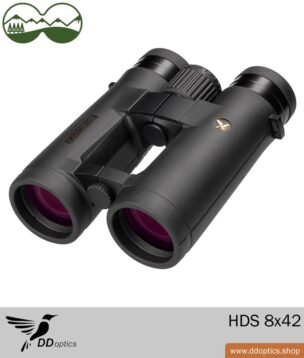-
×
 DDoptics binoculars HDS 8x42
€ 535,50
DDoptics binoculars HDS 8x42
€ 535,50 -
×
 Binoculars SHG 10x42 | DDoptics
€ 1.124,10
Binoculars SHG 10x42 | DDoptics
€ 1.124,10
Subtotal: € 1.659,60
The Nature observation counts as the BirdwatchingA good birdwatching telescope rewards you with excellent image brilliance and colour fidelity! " More info to a of the most important areas of application for binoculars. Many outdoor enthusiasts want to get to know nature even better. They observe so many situations from a distance as if they were right in the middle of them. When choosing the right binoculars, it's all about personal preferences for image reproduction and the available budget. Four characteristics are important when choosing the right binoculars decisive:
Binoculars handiness
On the "Picture hunting" in nature it is very important that you have the binoculars quickly to hand and that they are not bulky. It is best if they can be gripped easily with one hand.
The situation is different if the Binoculars with thread on tripod and makes continuous observations. Then a weight of 1.6 kg, for example, does not matter. For all freehand observations, we recommend a maximum weight of 900 grams.
Flexibility and focussing travel of the adjustment wheel
Occasionally you have to pan back and forth a lot. Many animals are almost always on the move. You have to Then frequently refocus the imageas the distance also changes frequently. With binoculars, it is therefore important that the focussing can always be adjusted very finely and, above all, without play. It is also very important that the focussing wheel does not have to be turned for too long to get the "fast image" in focus. This is best tested directly on the binoculars. It is important that the "Focusing speed of the rotation" is matched to the rotational resistance.
The magnification has a direct effect on the Binoculars focusing from: Binoculars with 7x magnification need to be focussed less often than 12x binoculars.
The most important thing when observing nature is image sharpness coupled with colour rendition! Exception: If you are in the TwilightFor night glasses, which are ideal for sitting game and as sow glasses, the light intensity is the most important feature. " More info the lenses get bigger!
Only if you recognise the fantastic details can recognise them as they really are, it's fun. Highest quality RemunerationWith the help of a simple coating, this loss of light transmission (transmission loss) is reduced to 1.5%, for example. This already increases the amount of light that reaches your eyes to around 80%. " More info from PrismsLenses have the property of imaging objects upside down and laterally inverted - therefore the image must be rotated again. " More info and LensesThe use of aspherical lenses leads to a reduction in the overall length of the binoculars and in some cases to a significant reduction in weight. " More info are unavoidable. In the case of roof edge glazing, this means that the prisms must have a Variety of dielectric layers must have. Only binoculars with PorroBinoculars with porro prisms are the real universal binoculars, are inexpensive and offer brighter images with higher contrast. " More info Prisms can do without them - but the small field of view prevents many people from using such binoculars for birdwatching.
For nature observation, we recommend a 7-10x EnlargementThe magnification of a binocular model is perhaps the most misunderstood feature. High magnification can be useful! " More info. Also higher for special applications.
| Luminous intensity | LensWhen we talk about the objective lens of binoculars, we mean the front lens. The front lens is the foremost lens of the objective. " More info | Utilisation |
| low | 25 mm | Lightweight and small pocket binoculars Ideal for normal lighting conditions |
| medium | 30 mm, 32 mm | Small all-round binoculars Ideal until early twilight |
| medium higher | 42 mm, 45 mm | All-round binoculars Ideal until (late) dusk |
| high | 50 mm, 56 mm, 60 mm | Heavier night glasses for astronomy, for low light conditions, in the evening and at night |
| Magnification | medium |
| 7x, 8x, 8.5x, 10x, 10.5x | Binoculars for sport, nature observation, astronomy, travel, ornithology, safari, observation General scope for selection: Small and handy with low light intensity or high light intensity with normal size and weight |
| Magnification | high |
| 12x, 15x | Binoculars for birdwatching, nature observation, safari, security, surveillance or border protection |
When you visit a website, it may store or retrieve information about your browser, usually in the form of cookies. Control your personal cookie services here.